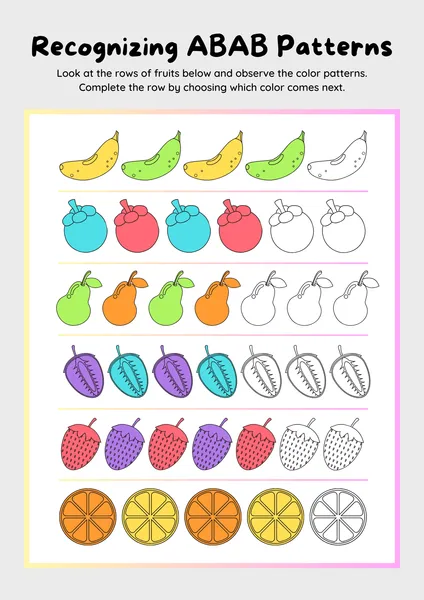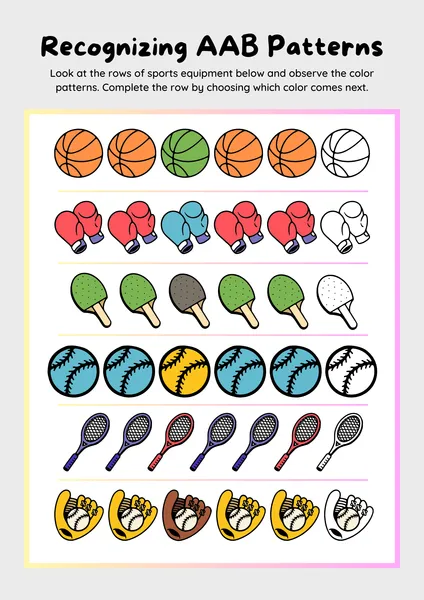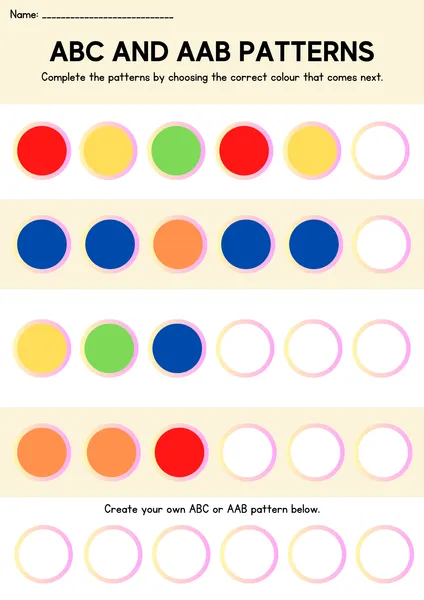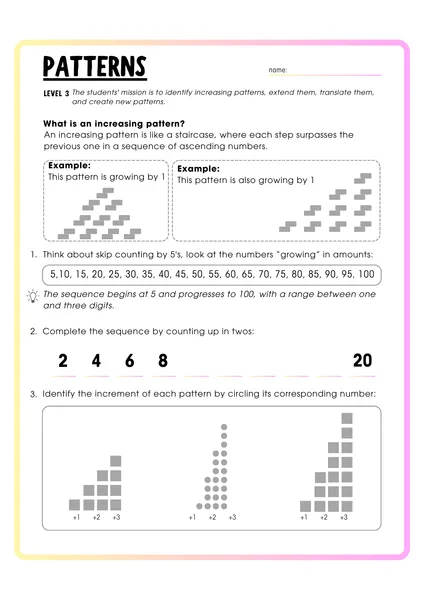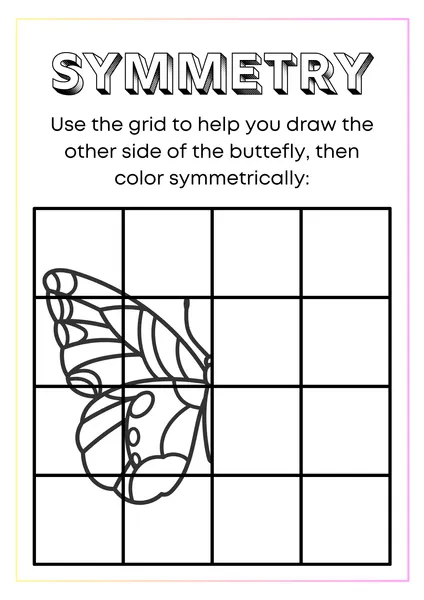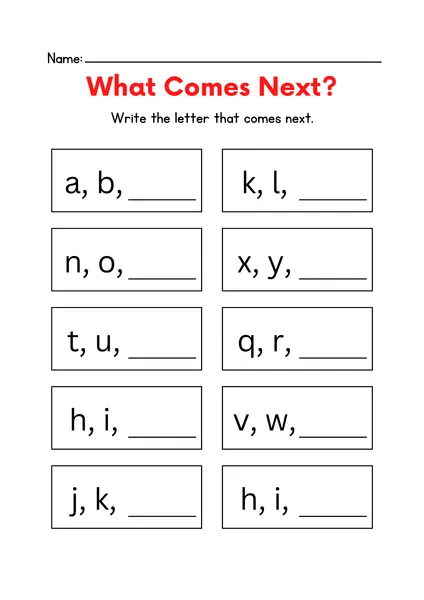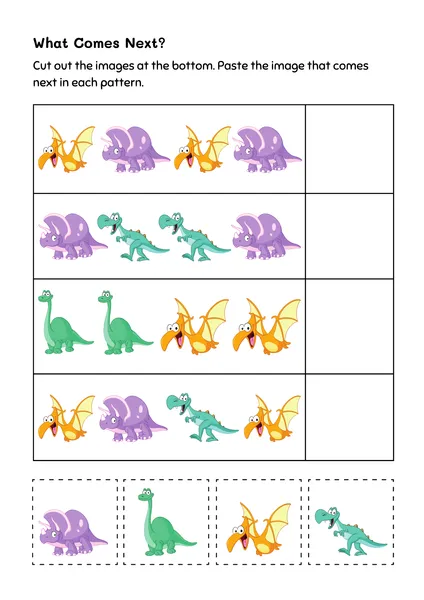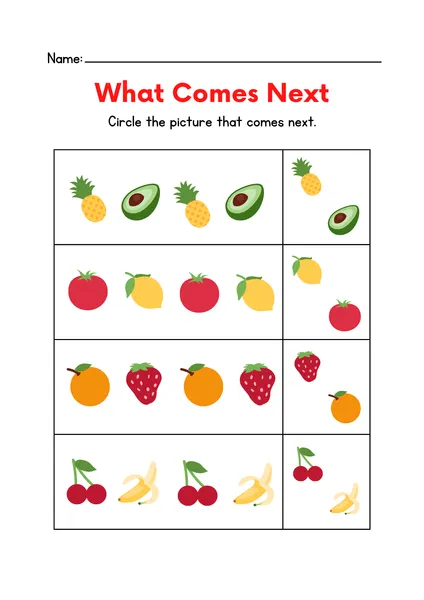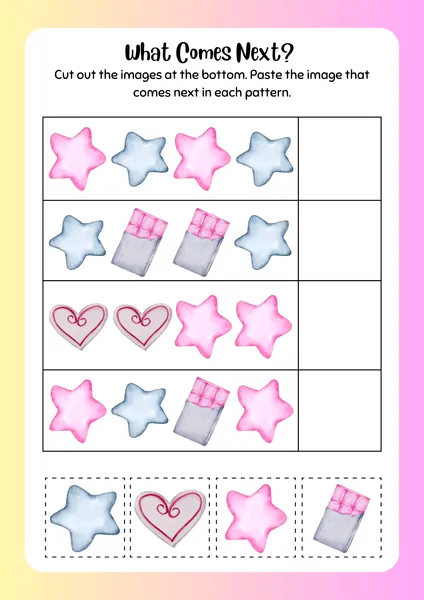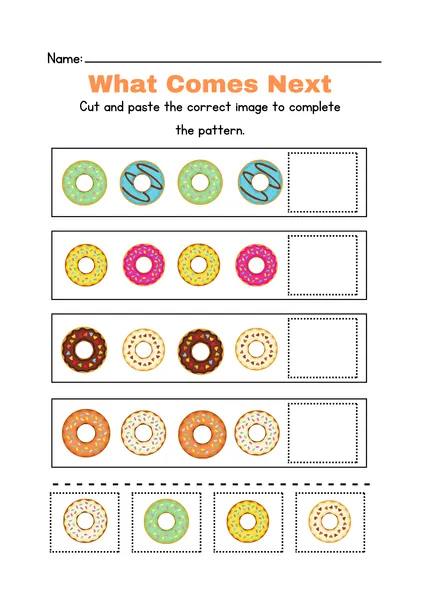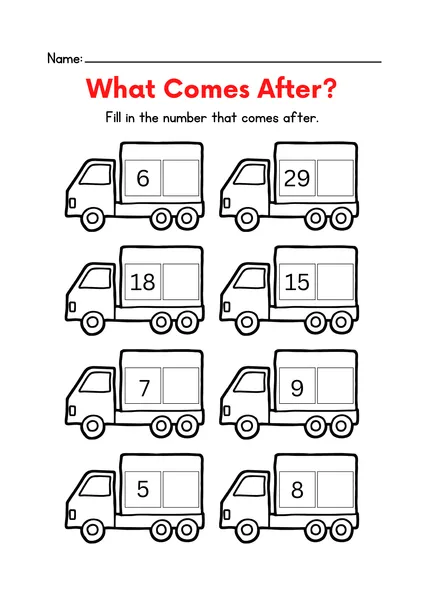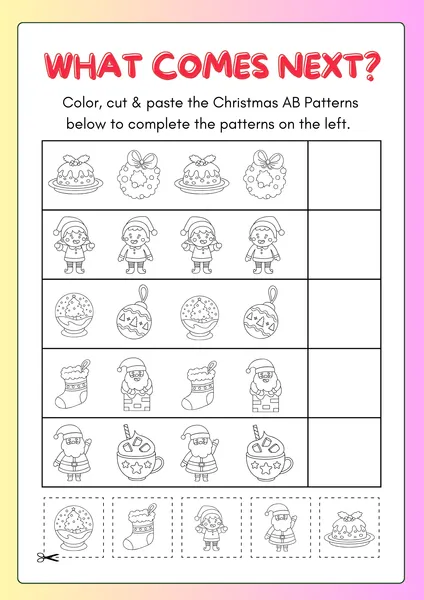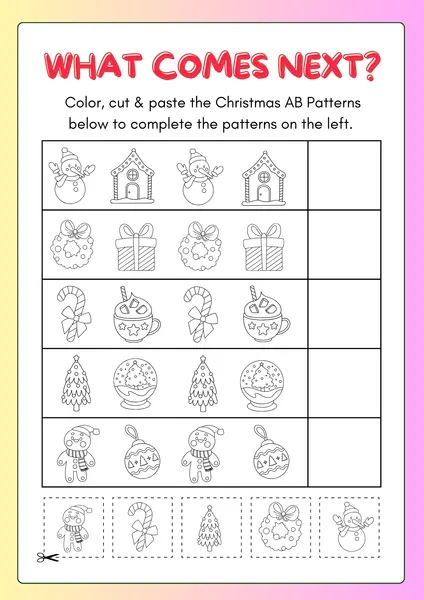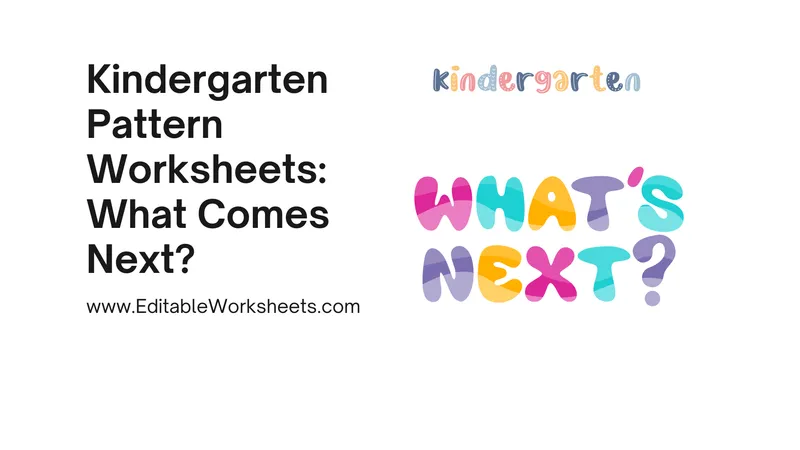Kindergarten Pattern Worksheets: What Comes Next? – Patterns are everywhere! Patterns everywhere, from the stripes on a zebra to the repeating chorus of your favourite song, help us make sense of the things around us.
Understanding patterns is a critical STEM building block for kindergarteners. For example, it teaches the basics of algebra, geometry and coding. This article looks into several, but not all, types of patterns that are introduced to kids in kindergarten, lets you have fun and learn how to identify patterns by constructing them, and provides a download to several ‘what comes next‘ worksheets to support your efforts if you need some more practise.
Types of Patterns
The study of simple patterns should start by exploring patterns with concrete objects like blocks, beads, buttons, etc., with kindergarteners. Then, as they advanced,d they could use the program’s colours, shapes, and sounds to create more abstract patterns. Here are some common pattern types:
ABAB Pattern:
It’s this repeating pattern — or two alternating elements, that is. For example:
- Colour: Red, Blue, Red, Blue
- Shape: It’s Circle, Square, Circle, Square.
- Object: Block, Car, Block, Car
- Sound: Clap, Stomp, Clap, Stomp
AAB Pattern:
There is a two-fold pattern of one repeated circumstance, another repeated circumstance, followed by a unique circumstance. For example:
- Colour: Red, Red Red, Red, Red Blue
- Shape: Square, Circle, Circle, Square, Circle, Circle
- Object: Block, Car, Block, Car, Block, Block
- Sound: Stomp, Clap, Clap, Stomp, Clap, Clap
ABC Pattern:
- The pattern is made of three different elements, repeating one after another. For example:
- Colour: Red, Yellow, Blue, Red, Yellow, Blue.
- Shape: Repeat it as Circle, Square, Triangle, Circle, Square, Triangle, etc.
- Object: Car, Block, Train, Car, Block, Train
- Sound: Stomp, Snap, Clap, Stomp, Snap, Clap.
Growing Patterns:
These patterns include patterns in which the number or size of the elements is changed. For example:
- Number: 1, 2, 3, 4
- Shape: This exercise consists of three games: Small circle, Medium circle and Large circle.
- Object: Two blocks, One block, Three blocks
Symmetrical Patterns:
The patterns are the same on either side of a dividing line. Conceptually, imagine folding a piece of paper in half (with paint on it); the image created is symmetrical.
- Shape: Triangle, Square, Triangle
- Object: Button, Bead, Button
Types-of-Kindergarten-Pattern-Worksheets
What Comes Next? Fun Activities for Pattern Recognition is back!
Pattern Block Creations
Give children several pattern blocks (hexagons, trapezoids, triangles, squares, rhombuses, and parallelograms) and let them create their patterns. They can copy patterns on a card or create their own designs.
This can be extended further by challenging children to make patterns with rules, for example, a pattern that uses only two shapes or makes a symmetrical pattern. Ask “what comes next?” and they create their patterns to facilitate prediction.
Beading Bonanza
Practise patterns is fun and tactile by stringing beads. Give kids a selection of colourful beads and see what pattern types they can make. They can follow a pattern card or think of their own.
Beads of different sizes are supplied for use in growing patterns. Children may take home their pattern bracelets. Let them work, but ask, “what colour bead comes next?” or ‘what next in your pattern?’
Musical Patterns
Students use musical instruments or their body percussion to create a sound pattern. You should play a drum, tambourine, and drum again (ABAB pattern). Children can copy the pattern or make up their rhythmic patterns using simple melodies and rhythms.
Then, fast and slow tempos will be introduced to make it complex. Their sound patterns enable children to move to the rhythm that supports their personal development. Stop the pattern and ask children, “what comes next?”
Nature Walk Patterns
Go outside and find patterns in nature. You may see patterns in the leaves, flowers, trees or clouds. Talk about the various patterns you see, and challenge the children to create some of their own.
Redistribute by collecting natural materials like leaves, pebbles, and sticks and creating patterns in the classroom. Line up some found objects (bits and pieces) and let them talk to you, asking questions like “what comes next in this nature pattern?”.
Snack Time Patterns
Take advantage of snack time, and leave patterns to practise, too. Have children identify the pattern of different types of fruit or crackers arranged in a pattern on a plate and have them add to it.
Ask children to make their edible patterns out of their snacks. Create a pattern with different kinds of fruit and ask, ‘what’s next?’ before adding the next piece.
Story Time Patterns
Read books that have patterns, such as “Brown Bear, Brown Bear, What Do You See?” Sometimes, things are referred to as “The Very Hungry Caterpillar.”
Make a list of the patterns in the storey, and challenge kids to make their patterns based on the book. Ask children to put on the movement and sound of the patterns in the storey. Repetitive phrases are in many stories – ask children, ‘What comes next?’ as you read.
Pattern Puzzles
Cut pictures or shapes into strips and then have children put them together to create simple pattern puzzles.
Use puzzles constructed from pictures of familiar objects or scenes to make them more engaging. The “what comes next?” is a natural byproduct of this. Children complete the puzzle over the question.
Movement Patterns
Add movement to pattern practice. For example, children could jump, clap, and then spin in a pattern.
You can call out different movements with the kids, create a pattern, call out another movement, etc. Sequence the movement, as you would if you were a dancer, and have them stop and say, ‘what movement comes next?’
Art Projects:
Different art materials such as paint, crayons, or colour markers can markersterns.
Children can paint stripes, dots or shapes in a repeat pattern to be painted onto paper or fabric. Try new art techniques like printing or sponge painting to make different patterns.
Have kids start a pattern on a long sheet of paper (such as construction paper), “Where does the pattern start? What colour/shape comes next.”
Building Block Patterns
Create three-dimensional patterns using building blocks. A child may stack blocks of different colours or sizes in a repeating sequence.
Challenge children to create towers for which they must follow specific pattern rules, like, for instance, ‘how many blocks does this level have? One more than the previous level.’ Ask, “what colour block comes next?” As they build. Or ‘what size block is next?’
Kindergarten Downloadable “What Comes Next” Worksheets
To further reinforce pattern recognition and creation, here are some downloadable kindergarten pattern worksheets:
Kindergarten-Pattern-Worksheets-What-Comes-Next
Worksheet 1: Identify the ABAB Pattern with colours and what comes next.
Worksheet 2: Combining Shapes and AAB Pattern – What’s Next?
Worksheet 3: ABC Renting Class with Objects – what comes next?
Worksheet 4: Growing Patterns with Numbers – What’s Next?
Worksheet 5: Make Your Own “What Comes Next” Pattern
Conclusion
It’s fun and rewarding teaching patterns to kindergarteners. Using fun activities and “what comes next” worksheets, children can develop essential math skills and fall in love with learning. Don’t forget to keep it playful, play with various materials, and encourage creativity!
